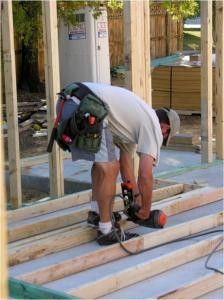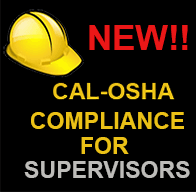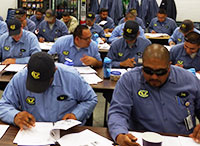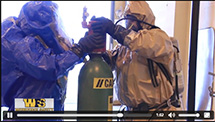Nail Gun Safety
Pneumatic nail guns are common tools in residential construction. The tools allow increased productivity, but also create serious injury risks. They are typically energized by air pressure supplied by a compressor, requiring a hose from the compressor to the gun. The tools are then loaded with magazines of nails joined together. Framing nailers are capable of driving 3.5 inch nails into dense wood in less than a 10th of a second! 
The two most common triggering mechanisms on these tools are contact trip and sequential triggers. The more popular contact trip design allows nails to be discharged from the tool anytime the nose and the trigger mechanism are both depressed. Workers are able to hold the trigger down and do rapid fire “bounce” nailing to speed up progress. The sequential design requires that the nose be depressed before the trigger in order to discharge a nail, making it more difficult to unintentionally discharge nails because the trigger has to be pressed every time a nail is discharged.
Most nail gun injuries occur when the gun is equipped with a contact trip trigger. Contact trip triggers allow the gun to discharge a nail anytime the gun’s nose piece and the trigger are pressed, so the user can hold the trigger down and bump fire the gun repeatedly by simply pushing down on the nose piece rather than repeatedly pressing the trigger. Carpenters prefer using contact trip triggers because they are faster and do not require the repetitive movement of pulling the trigger. However, contact trip triggers also make it much easier for the operator to accidently shoot themselves or anyone standing close by if the nose piece bumps up against someone or something while the trigger is depressed. Injuries often occur when climbing up and down ladders while holding a nail gun with a finger on the trigger.
ALERT: The two types of nail guns look exactly alike, so workers often cannot tell the difference between the contact trip and sequential triggers. A number of manufacturers now have models that allow the triggering mechanism to switch back and forth from contact or sequential, which can also be confusing.
Because of the dangerous nature of these tools, it is important to be trained in safe handling practices before using them. The facts contained in this Hazard Alert will give you basic information, good work practices, and helpful resources to prevent injuries.
GENERAL SAFETY GUIDELINES:
- Review the owner’s manual carefully with all operators. Be aware of the type of gun being used!
- Use manufacturer’s specified pressures for the tool.
- Supervisors should observe each employee demonstrating safe operating procedures.
- Always wear safety glasses.
- DO NOT touch the trigger unless firing the tool against a work piece.
- Use extreme caution when using an air tool around other workers.
- Never point the tool at anyone. Treat the tool like a firearm and assume that it is loaded!
- Disconnect the air hose before clearing a jam or making adjustments.
- Keep your free hand safely out of the way of the tool.
- Secure the hose when working on scaffolding to prevent the weight of the hose from dragging the tool off the scaffold if you set the tool down.
Pneumatic nail guns are extremely helpful tools, but must be treated with respect and handled carefully in order to reap the benefits! Injury will slow a job down much more significantly than any safety measure ever could.



